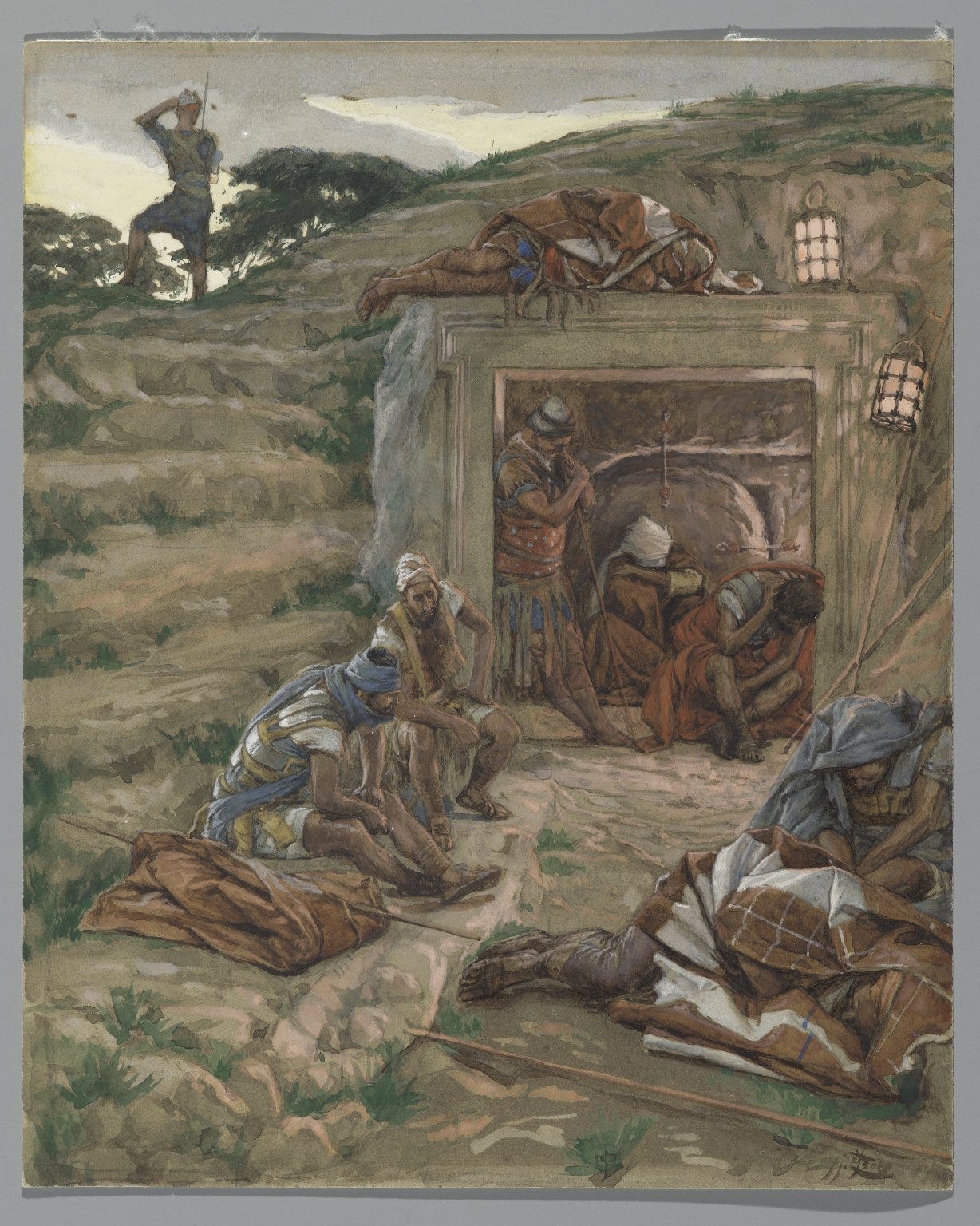
friday || weep with those who weep
Yesterday we observed death. We heard the words “My God, my God, why have you forsaken me?” The bitter wine, the casting of lots, the blood-dripped brow. All of the violence and wickedness of humanity, all at once, all on one man.
In Cross-Shattered Christ, Stanley Hauerwas writes about how quickly we try to rationalize Jesus’s death—we say Jesus died for our sins, that his death atones, that he had to do it to make the world whole again. While theologically accurate, it does not change the ugly realities of death. Hauerwas writes,
“By allowing himself to be handed over, Jesus in his dying is not trying to give meaning and purpose to death. As Bonhoeffer observed, Jesus’s death and resurrection is not the solution to the problem of death. Rather this is the death of the Son of God.”1
“This is the death of the Son of God.” Full stop. We know Sunday is coming, we know salvation is at hand, we know the end of the story, but none of this takes away from the unrelenting pain of death that Friday represents.
Friday tells us that feeling the crushing weight of pain is a Christian act. If the Son of God could cry from the cross, “My God, my God, why have you forsaken me?” then surely the suffering world is able to cry the same.
sunday || rejoice with those who rejoice
Tomorrow is a day of celebration. Jesus died and miraculously came back to life. It is a mystery. It is marvelous. It is the birthplace of joy.
Tomorrow we will arrive at church in whatever clothes we choose to wear, in whatever shape our lives are in, and we will stare into the face of life, recognizing the deaths—both literal and figurative—we experience will not hold forever. We will smile into the face of newfound life, of crying babies at the back of the sanctuary, of time spent with family, of knowing pain does not have the final say.
By not painting over the hurt of Friday, we are able to recognize the beauty of Sunday all the more. We are able to worship a God who collects our tears in bottles, who brings dead bones to life, who declares to the Israelites,
Then shall the young women rejoice in the dance,
and the young men and the old shall be merry.
I will turn their mourning into joy;
I will comfort them, and give them gladness for sorrow.
Friday was a day of death. Sunday will be a day of dancing.
Such a wild, mysterious paradox.
saturday || the day in-between.
But we are currently in Holy Saturday, the day in-between, the land bridge between death and life.
What are we supposed to do?
For me, this day represents an opportunity to hold in tension Friday and Sunday, a reminder to let Friday be fully Friday and Sunday be fully Sunday.
It reminds me of the paradox of the lion and the lamb that G.K. Chesterton writes about the in Orthodoxy:
“The real problem is—Can the lion lie down with the lamb and still retain his royal ferocity? That is the problem the Church attempted; that is the miracle she achieved.”2
Sunday does not take away the pain of death. And Friday does not take away the joy of life. Our celebration of life co-exists with our mourning of death because Jesus modeled it. He is with us in our grief, and he is with us in our joy.
Weep with those who weep and rejoice with those who rejoice.
Saturday is a holy reminder.
cheering for you,
drew
Stanley Hauerwas, Cross-Shattered Christ: Meditations on the Seven Last Words, Brazos, Grand Rapids, 2004, 29.
G.K. Chesterton, Orthodoxy, Crown Publishing Group, New York City, 1990, 100.


